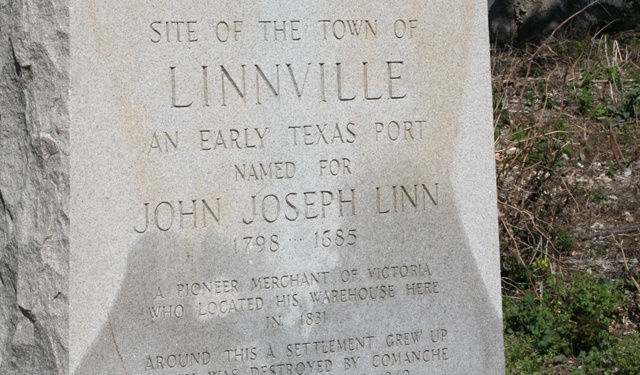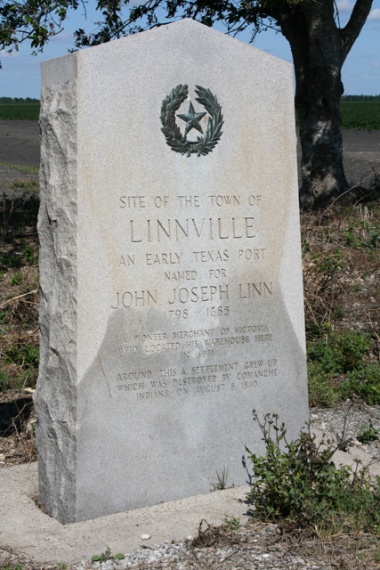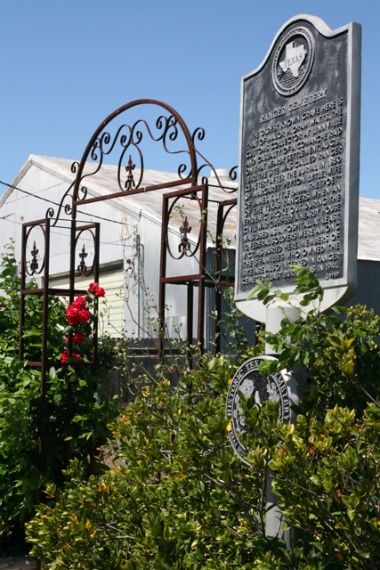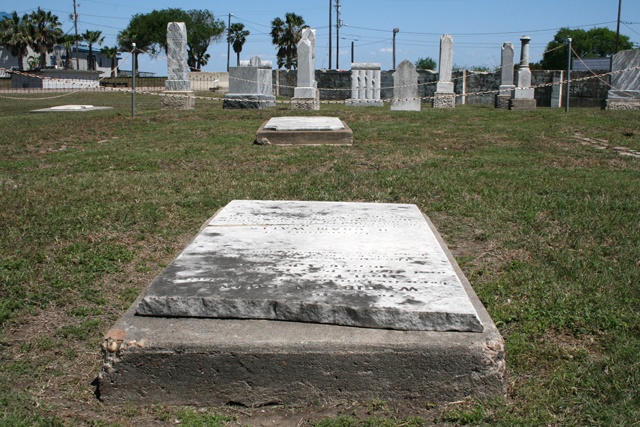Calhoun County Museum Director George Anne Cormier scrolls over a satellite view of the coast near Port Lavaca on Google Maps, trying to find the site of the once-booming port town of Linnville, or at least its elusive Texas Centennial marker. She zooms in to where the streets dead-end at Lavaca Bay.
“I hope you can find it out there,” she says. “A lot of it is falling into the bay.”
Just beyond one of those dead-end roads off FM 1090 in a modern neighborhood about 5 miles north of central Port Lavaca, tides have reworked the coastline and erased evidence of this town that met a violent demise nearly 175 years ago.
Established in 1831, Linnville was the port through which most goods were shipped to Victoria, Gonzales and San Antonio. The town grew to 200 residents and included homes, warehouses, businesses and a customhouse for the Republic of Texas.
But Comanches destroyed Linnville in 1840 after the Council House Fight, a dispute between the tribe and Texas commissioners in San Antonio. In retaliation, the Comanches stormed Victoria and obliterated Linnville.
Most townspeople stayed alive by waiting out the attack in boats on the bay, but fatalities included customs officer H. Oram Watts. When the raid was over, the survivors and major maritime traffic moved to Port Lavaca, and Linnville was never rebuilt.
Watts is buried in historic Ranger Cemetery on Harbor Street in Port Lavaca. There, seagulls cry and salt wind blows in from the bay. Through a rose arbor on a small lot among graves dating back to the mid-1800s, Watts reposes under a flat granite gravestone whose upper right corner has weathered away, like the corner torn from the page of a book.
Although less than 30 years ago bricks from the only remaining building could be still seen from a nearby bluff, says T. Lindsay Baker, historian and author of “Ghost Towns of Texas,” today the remains of Linnville are underwater. Somewhere in storage, Cormier says, the museum has only a couple of artifacts found near the site: a musket ball and a piece of melted metal shaped like a heart.
Set on dry land in 1936, the Texas Historical Commission marker commemorating Linnville was recently moved inland to escape the advancing waves. Adorned with weeds, it sits by a field near the intersection of FM 1090 and East Maxwell Ditch Road, more than a mile from the site it memorializes.




